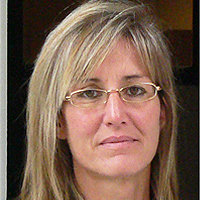Localization of the occluded vessel in acute myocardial infarction
Published on: 18th February, 2020
OCLC Number/Unique Identifier: 8550958571
This is a review of features in ECG to diagnose the culprit artery responsible for the infarction. Localization of the occluded vessel in acute myocardial infarction is important for many reasons: to know which artery is to dilate and stent; to assess the severity of the lesion; to compare with the echocardiographic area with hypokinesia or akinesia and to differentiate the recent from the old occluded vessel. The ST-segment changes in 12-lead ECG form the basis of diagnosis, management, and prognosis.
Influenza B myositis, case report, in hospital Roosevelt, Guatemala city
Published on: 11th March, 2023
Influenza B myositis is a self-limited process that is typically accompanied by myalgia and muscle weakness, which can be caused by an acute respiratory infection. It occurs in the convalescence phase of the disease. It can usually affect preschool and school children, who present bilateral pain and tenderness in the muscle groups of the lower limbs without alterations in the neurological examination. Being able to generate an alteration in the brand or bipedestation. Its main complication is rhabdomyolysis. In Guatemala is difficult to test for viral respiratory infection and the incidence of viral myositis is unknown, for which we consider the report important because it presents a benign course and is easy to manage with the use of non-steroidal anti-inflammatory drugs, to avoid unnecessary hospitalizations. We present to case report to an 8-year-old male patient, previously healthy, with diagnostic de Influenza B myositis.
Incidence and outcome of no flow after primary percutaneous coronary intervention in acute myocardial infarction
Published on: 31st August, 2020
OCLC Number/Unique Identifier: 8667871110
Background: Primary percutaneous coronary intervention (PCI) of the infarct-related artery (IRA) is the most effective treatment modality in ST-segment elevation myocardial infarction (STEMI). Incidence of no flow is 8.8% - 10% in primary PCI of STEMI patients. Our aim was to study actual incidence and outcome of no flow patients.
Methods: Five hundred and eighty primary PCI patients were enrolled and evaluated from 2016 January to 2017 December.
We used drug eluting stents in all cases. Majority of our patients (> 90%) presented to emergency six hours after onset of symptoms. There were many patients where there was no flow even after mechanical thrombus aspiration and pharmacological vasodilator therapy. We have studied primary outcome (mortality) of no flow in those patients.
Results: There were 44 cases of no flow in our series (7.75%). Involvement of Left anterior descending artery (LAD) was in eighteen patients. Right coronary artery (RCA) was culprit in twenty four cases. Only two cases were seen in LCX territory. One month mortality rate in no flow group was 50% and 6.25% in successful recanalization group. One year mortality was 12.5% in successful recanalization group and 66% in no flow group.
Conclusion: Refractory no flow during STEMI intervention is associated with increased incidence of major adverse cardiovascular events (MACE).
There is no established strategy to solve this phenomenon.
The clinicopathological correlates of Cystoisosporiasis in immunocompetent, immunocompromised and HIV-infected/AIDS patients, but neglected in SARS-COV-2/COVID-19 patients?
Published on: 20th January, 2021
OCLC Number/Unique Identifier: 8897954051
Cystoisosporiasis (formerly isosporiasis) is caused by Cystoisospora belli (erstwhile named Isospora belli) is encountered globally, particularly in tropical and subtropical regions. Cystoisosporiasis is a human intestinal disease whose etiology is the parasite Cystoisospora belli with infection frequent in immunocompromised subjects, principally HIV-infected and AIDS patients. This coccidium parasite infects the epithelial cells and lining of the villi of the small and large intestines. C. belli is the least frequent of the three intestinal coccidia, viz: Cryptosporidium, microsporidium and C. belli which perturb humans. The clinical presentation of cystoisosporiasis gives a semblance of inflammatory bowel disease and irritable bowel syndrome, as well as other gastrointestinal symptoms, nausea, vomiting and diarhoea found in COVID-19, AIDS and HIV-infected patients. Research has not presented comorbid features of COVID-19 and cystoisosporiasis. The oocytes of C. belli are visualizable microscopically on wet mounts via bright-field, differential interference contrast (DIC) and epifluorescence. Trimethoprin sulfamethoxazole constitute the normal treatment of choice. C. belli,HIV-infected/AIDS and COVID-19 patients have clinicopathological correlates necessary to elucidate comorbidities and mechanisms of the diseases.
Effects of melatonin on liver and lung tissues of animals with bile duct ligation-induced hepatopulmonary syndrome
Published on: 13th October, 2021
OCLC Number/Unique Identifier: 9305372985
The objective was to assess the antioxidant effect of melatonin (MLT) on liver and lung tissues of animals with bile duct ligation (BDL)-induced hepato-pulmonary syndrome (HPS). A model of BDL-induced biliary cirrhosis was used in male Wistar rats. Results suggest that MLT has an antioxidant effect on liver and lung tissues in animals with BDL-induced HPS by higher activity of antioxidant enzymes in the group HPS treated with MLT and the histological analysis of lung parenchyma showing decreased damage in this same group, including other analysis described below.
Thoracic endometriosis: A case of one step multidisciplinary surgical treatment
Published on: 19th August, 2022
We describe a case of thoracic endometriosis in a patient with a repeated episode of spontaneous pneumothorax. Investigations revealed diaphragmatic fenestrations and right-sided pleural and lung endometriosis. Considering the ultrasound evidence of pelvic endometriosis, the patient was scheduled for multidisciplinary surgical management, to treat in one step thoracic and pelvic endometriosis.
An empirical study on factors responsible for Rheumatic Heart Disease (RHD) and its severity levels amongst the Bhutanese populace
Published on: 30th August, 2022
Background and objectives: This paper is aimed at excavating the factors responsible for RHD events and vis-à-vis establishing severity levels of RHD patients referred to Jigme Dorji Wangchuck National Referral Hospital (JDWNRH) in Thimphu’s capital city of Bhutan. Methods: By taking notorious advantage of the data gathered over the past five years (2016-2020) from RHD patients across 20 districts of Bhutan, about 232 RHD patients are involved in this study recorded in JDWNRH by the Cardiology Department. Besides descriptive methods, multivariate linear regression models augmented by the multinomial logistic regression models had been applied to establish the causual links. Results: The findings revealed that RHD prevailed amongst the young populace of Bhutan, especially females. Variables like age, frequency of visits, number of diagnostics, levels of education and region had been found as predictors of RHD prevalence. Other socio-demographic factors like occupation and status of employment did not affect the RHD prevalence. The multinomial logistic regression results indicated that higher levels of education as an important factor for not making the patient fall into the category of ‘severe.’ Age has been constantly found to be a highly significant variable contributing to RHD events and a quadratic relationship is revealed between age and the severity of RHD. Conclusion and implications for translation: This study pigeonholed the significant factors responsible for RHD events and entailed severity levels by gender and age. The findings of this study also provide additional important insights into developing public health policies and programs.
Scientific Analysis of Eucharistic Miracles: Importance of a Standardization in Evaluation
Published on: 13th November, 2024
Numerous instances of consecrated communion wafers turning into human tissue and blood have been reported throughout history and the contemporary international media, referred to as Eucharistic miracles. Various suggestions have been put forth to explain such phenomena, ranging from miraculous to natural. Here, a novel demonstration is provided showing that the appearance of a bleeding host can occur by placing ordinary, non-consecrated wafers under similar conditions as described for many of these events. Using basic forensic methods, distinctions between ensuant reddish areas and genuine blood were noted. In previous studies with miracle wafers, isolated DNA was resistant to amplification with human-specific primers, which has been attributed to its divine nature. The current study shows that multiple types of non-human DNA existed in unconsecrated wafers, providing an alternative explanation for such findings. Finally, a minimal protocol of scientific examination is outlined to aid in the standardization of such investigations in the future, including a distinctive approach to authenticate the genuine shared origin of such occurrences.
Assessment of early initiation of breastfeeding and determinants among mothers of children under 24 months in Southeast Ethiopia: a community-based cross-sectional study
Published on: 29th October, 2021
OCLC Number/Unique Identifier: 9323491709
Background: Early-initiation of breastfeeding is putting the newborns to the breast within the first hour of life. It is the first critical time they contact their mother outside of the womb. The current study aimed to assess the early initiation of breastfeeding in the study setting. Objectives: To assess the level of early initiation of breastfeeding and its associated factors among mothers who had a baby of less than the age of 24 months in Jeju Woreda, Arsi Zone, Oromia, Ethiopia, 2019.Methods: A community-based cross-sectional study conducted involving 487 mothers from September 18 to October 09, 2019. A multistage sampling technique was employed. First, the setting stratification done in urban and rural settings. Second, ten kebeles selected from both strata. The study participants identified by systematic random sampling technique using kebele log-books registration list as a scheme. The collected data were entered into Epi Info version 7.1.5.0 and exported to SPSS version 21.0.0.0 to analyze. Bivariate and multivariate logistic regression used to determine relations between independent factors and early initiation of breastfeeding. Nine variables became eligible for multivariate analysis at a p - value less than 0.05 in bivariate. The final analyses done the significance of association decided using AOR with its 95% CI, and p - value at less than 0.05. Results: A 97% response rate achieved in this study. The prevalence of early breastfeeding initiation was 74.5%. In multivariate analysis variables namely, mothers whose age category was 35 years and above (AOR = 2.34, 95% CI: (1.07, 5.11)), Pre-lacteal feeding (AOR = 0.37 95% CI (0.17, 0.79)), postpartum advice (AOR = 1.72, 95% CI (1.01, 2.95)) had a significant association. Conclusion and recommendations: The prevalence of early breastfeeding initiation was (74.5%). The finding was low compared to the world health organization recommendation. A working towards discouraging pre-lacteal feeding and strengthening postnatal advice and focusing on ways to better reach young mothers were the recommendations to bring the prevalence in the study area to the recommended level.
Production of L-Asparaginase by Yemeni Filamentous Fungi
Published on: 23rd October, 2023
Yemen with its diverse climatic regions represents a rich resource for bioactive compounds obtained from microorganisms. This study was designed to screen fungal isolates obtained from the Microbiology branch, Biological Sciences Department, Faculty of Science, Sana’a University for their ability to produce L-asparaginase enzyme. In preliminary screening for L-asparaginase, among 77 fungal isolates about 29 fungal isolates representing 37.66% were high producers of L-asparaginase. These fungal isolates belonged to the genera Aspergillus, Eupenicillium, Fusarium, Penicillium, and Stachyobotrys. These 29 fungal isolates were screened for their ability to produce L-asparaginase using the agar well diffusion method. 12 fungal isolates out of 29 showed the ability to produce extracellular L-asparaginase. These isolates belonged to 8 species which were: A. sulphurs, A. ustus, F. sacchari, P. chrysogenum, P. citrinum, P. corylophilum, P. melinii, and P. subturcoseum. Only 5 isolates were obtained for the determination of enzymatic activity, among them P. chrysogenum showed the highest activity (279.8696U ml-1) followed by A. ustus (170.9435U ml-1). This finding is the first report on the L-asparaginase production from filamentous fungi in Yemen.




